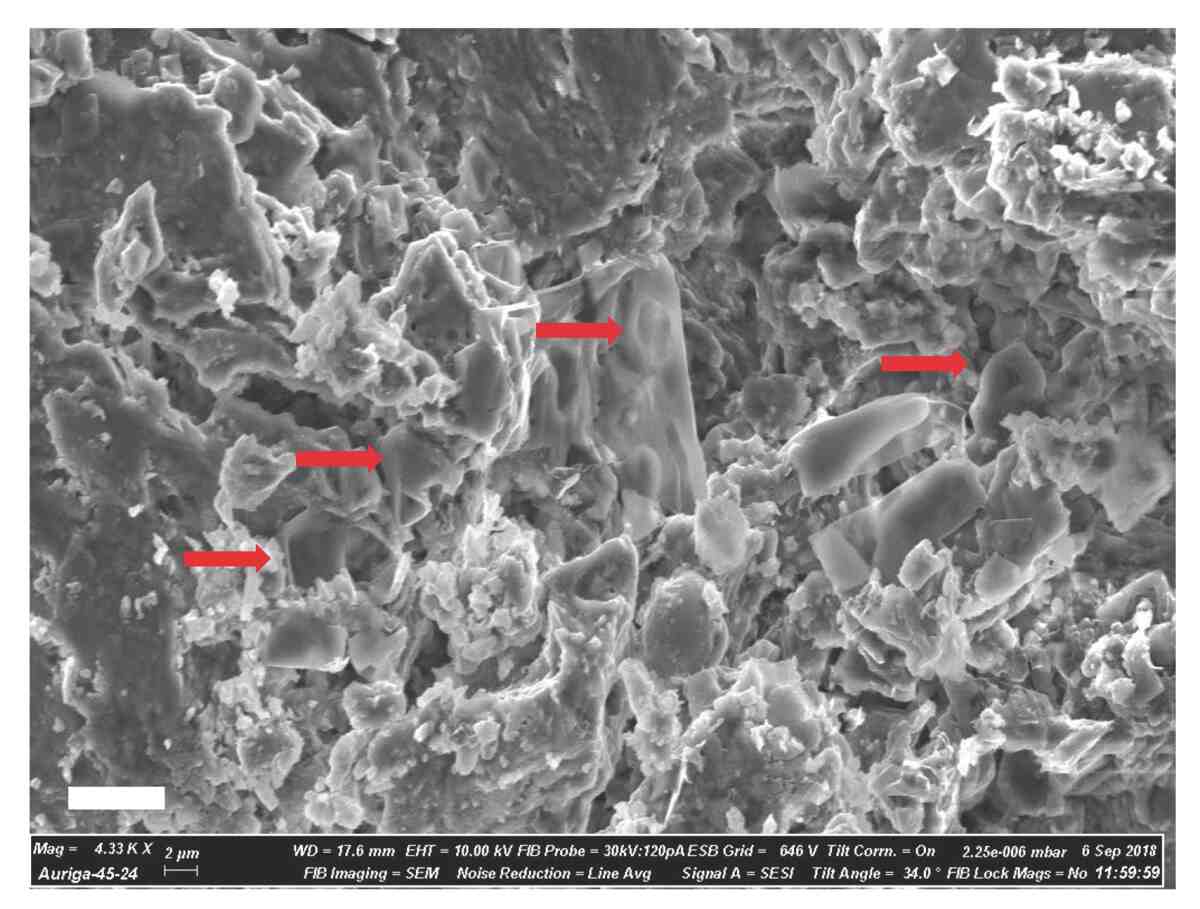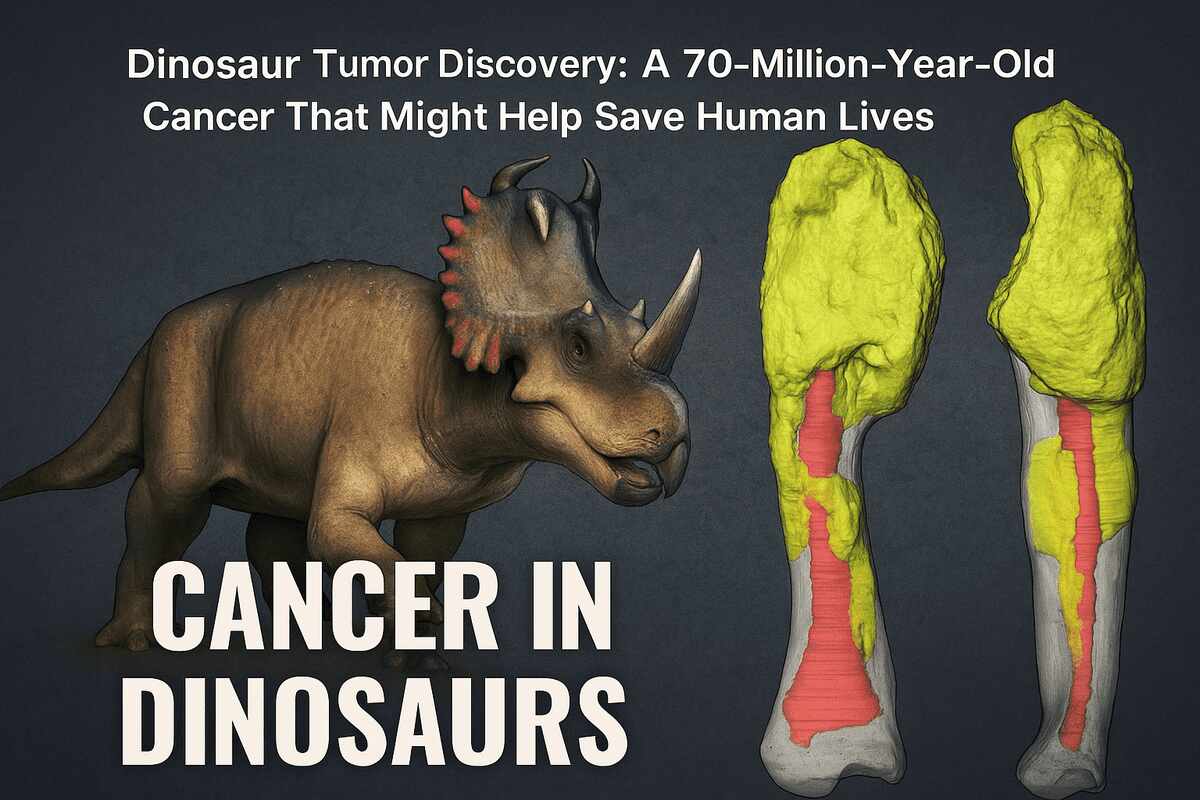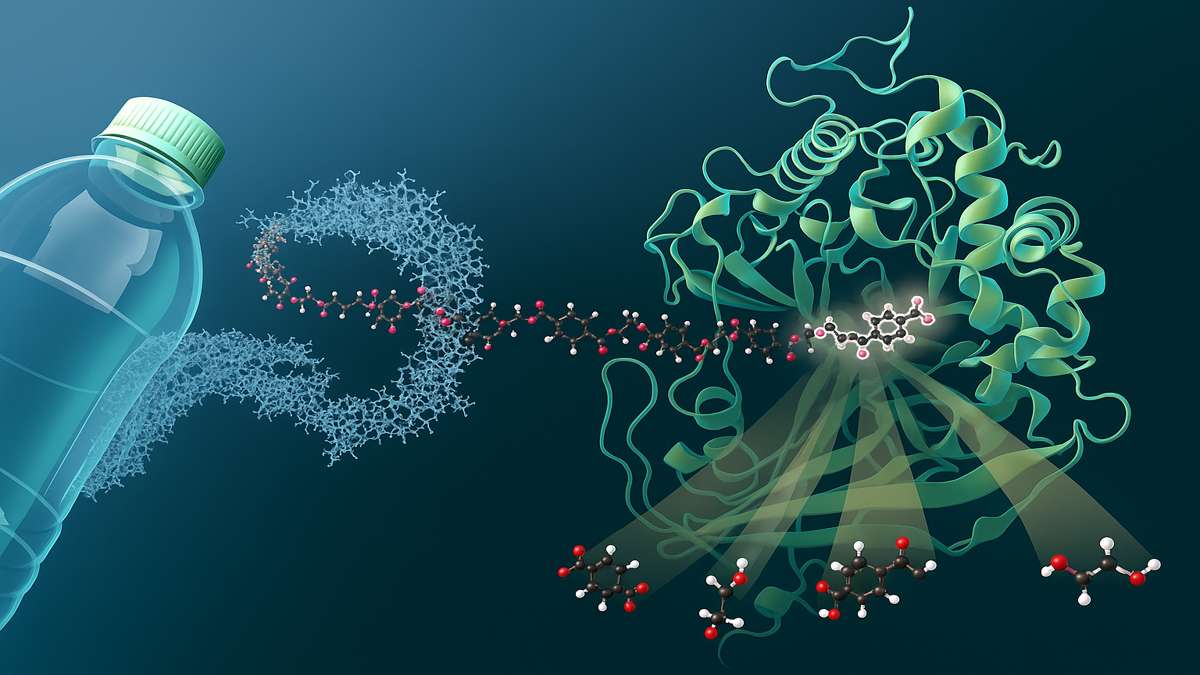
In a historic dinosaur cancer discovery, researchers found a 70 million-year-old tumor in the fossilized jawbone of a duck-billed dinosaur. This isn’t just an exciting paleontological find — it could provide crucial information about how cancer evolved and potentially provide new ideas that may be groundbreaking in the human cancer treatment. This unique fossil links our deep past with our current medical endeavors because what we gain from ancient life has the potential to influence how we address one of humanity’s most deadly diseases.
Cancer in Dinosaur : The Oldest Tumor Ever Discovered
The cancer in dinosaur associated with this exciting find is Telmatosaurus transsylvanicus, a plant-eating species from the Late Cretaceous, that lived around 70 million years ago, in what is now Romania. As researchers were studying the remains of this dinosaur, they observed something unexpected; a dinosaur tumor in the fossilized jawbone. Using high-resolution CT scans, researchers identified the growth as ameloblastoma, a fossil tumor that is still diagnosed in human jaws today. This discovery marks the first verified case of cancer in dinosaurs, and importantly, from a historic perspective, one of the oldest tumors ever discovered in a vertebrate.
Although the dinosaur cancer finding is more than a paleontological achievement — it may provide evolutionary insights that could eventually help us find new treatments for human cancer.
🧠 What Is an Ameloblastoma?
An ameloblastoma is a rare non-cancerous bone tumor that usually occurs in the jaw bone, around the molars. In people, it can cause some degree of facial deformity and damage to surrounding tissues, but it rarely metastasizes, or spreads, to other parts of the body. What was of most interest to scientists was the structural similarity between the dinosaur’s tumor and those seen in modern hospitals. Even with an evolutionary gap of 70 million years, the tumor was almost identical, suggesting that some of the biological mechanisms of tumor growth have not changed for millions of years.
🔎 How the Tumor Was Found?
The fossil was of a juvenile Telmatosaurus and the tumor was found in the dinosaur’s right jawbone during a routine excavation in Romania’s Hațeg Basin. Its initial identification came when the researchers saw a swelling on the outside of the fossil and wanted to investigate further. Using CT scans, the researchers were able to perform a non-invasive examination of the interior of the bone and saw a dome-shaped bubble that confirmed it was consistent with ameloblastoma. The CT scan allowed the researchers to identify the tumor and avoid damaging the fossil, representing a major advancement for both paleontology and oncology.
🌍 From Fossils to Future: How a Dinosaur Tumor Could Transform Human Cancer Research
Imagine that you have just learned how to cure cancer, not in a laboratory, but in a fossilized dinosaur jaw.
I’m not talking about science fiction. This is an actual discovery that is revolutionizing the field of human cancer research. The fossilized tumor and specimens of Telmatosaurus are providing invaluable information about where cancer comes from and how it has evolved, showing that ancient tumors existed well before humans evolved.
Through the study of this prehistoric disease, scientists can answer critical questions, such as:
- How do some tumors remain unharmful while others turn aggressive?
- What biological or environmental narratives trigger the manner of behavior of tumor?
- Can ancient evolutionary processes help denigrate modern-day oncologists from these destructive diseases?
This also marks the emergence of a new interdisciplinary field called paleo-oncology, where ancient peoples can help decode the action of one of today’s leading killers.
💡 Can This Ancient Tumor Inform Cancer Treatments?
Although finding the tumor won’t immediately solve the problem of cancer, it does provide niches that investigators can look and potentially study how the presence of the genetic makeup of ancient tumors aspects might be useful for investigators. For example, looking at the genetic make-up of ancient tumors could enable researchers to:
- Establish which genetic mutations have persisted through evolution
- Learn what prevented the dinosaur’s tumor from becoming malignant
- Inspire new approaches for how best to inhibit and/or limit human tumor’s from growing.
“Finding this tumor is like discovering a medical case report that’s 70 million years old,” says lead researcher Dr. Zoltán Csiki-Sava, paleontologist. “It tells us that cancer has ancient lineage, and has been part of life longer than we believed.” Many people think the development of cancer occurs in modern life-skills that include pollution, smoking and bad eating. This study disproves that premise. Cancer has existed since the days of dinosaurs. There is not a particular aspect of modern life that is causing cancer.
📊 Cancer Is Not a Modern Disease
Many people assume that cancer is a result of modern life– from pollution to smoking to diet. But this discovery flies in the face of that belief. This shows that cancer always existed, even in the time of the dinosaurs. Understanding this allows us:
- Remove the stigma that cancer is a “manmade” disease
- Put it into it’s place of geological time
- Bring us the solutions we need based on long biological time
🖼️ The Bigger Picture: What Fossils Teach Us
Fossils are more than just bones; they are biological time capsules. Fossils can tell us about ancient ecosystems, extinct species, and now, the history of disease. What we can learn from studying fossils with evidence of tumors:
- Trace how diseases arise and adapted
- Compare response to disease from ancient vs. modern times
- Create new models of prevention and treatments
- Not just dinosaurs, Discovering how life and disease evolved together.
🔬 What’s Next in Paleo-Oncology?
Scientists are now scanning more fossils, looking for tumors and diseases. They are also creating a large database of ancient diseases, which may one day serve as a reference for physicians, and geneticists. In the near future we may:
- Be able to use fossil data to predict cancer risk
- Learn how some animals evolved to resist tumors
- Develop therapies based on the longest-standing pattern of evolution
🏁 Conclusion: Ancient Clues, Modern Cancer Hope
While not just a remarkable fossil discovery, the discovery of a 70 million-year-old dinosaur tumor is a breakthrough for understanding the evolution of cancer: a revealing view of our past that also shows that cancer was existent in dinosaurs long before humans, and thus clearly has long roots in Earth’s history.
And with that ancient knowledge comes hope. By studying ancient tumors, researchers in human cancer research may find new tools in the fight to combat cancer today.
Sometimes the cure for tomorrow’s illnesses can be found in yesterday’s bones.
Want to learn how modern science is fighting back against genetic diseases? Read our in-depth post on CRISPR-Cas9 gene editing and how it’s transforming medicine.
❓ Frequently Asked Questions (FAQs)
🔍 What is the first evidence of cancer in dinosaurs?
Researchers found the first confirmed case of cancer in dinosaurs in a fossilized jawbone of Telmatosaurus. It contained a rare, benign tumor called ameloblastoma — a condition still seen in humans today.
🦴 How old is the dinosaur tumor discovered?
This dinosaur tumor dates back around 70 million years, making it one of the oldest recorded tumors in any vertebrate species.
🧬 What is paleo-oncology?
Paleo-oncology is the study of cancer in ancient life forms, including dinosaurs. It helps scientists understand how ancient tumors evolved and what that means for modern cancer treatment.
💡 How can this dinosaur tumor help human cancer research?
By studying this dinosaur cancer discovery, researchers can uncover how tumors developed through time — providing potential clues to improve today’s human cancer research.
📌 Why is this discovery important for science?
This find proves that cancer has existed for millions of years. Understanding its ancient history can give scientists a deeper view into how to prevent or treat cancer more effectively today.
All answers are based on verified scientific findings and presented in simplified form for public understanding.




